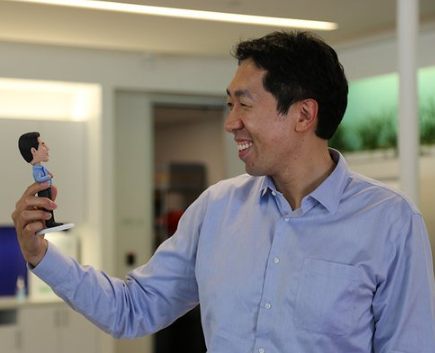This is the new book by Andrew Ng, still in progress. Andrew Yan-Tak Ng is a computer scientist and entrepreneur. He is one of the most influential minds in Artificial Intelligence and Deep Learning. Ng founded and led Google Brain and was a former VP & Chief Scientist at Baidu, building the company’s Artificial Intelligence Group into several thousand people. He is an adjunct professor (formerly associate professor and Director of the AI Lab) at Stanford University. Ng is also an early pioneer in online learning – which led to the co-founding of Coursera.
Machine Learning Yearning is a deeplearning.ai project. The subtitle of the book is Technical strategy for AI engineers in the era of deep learning.
- Why Machine Learning Strategy
- How to use this book to help your team
- Prerequisites and Notation
- Scale drives machine learning progress
- Your development and test sets
- Your dev and test sets should come from the same distribution
- How large do the dev/test sets need to be?
- Establish a single-number evaluation metric for your team to optimize
- Optimizing and satisficing metrics
- Having a dev set and metric speeds up iterations
- When to change dev/test sets and metrics
- Takeaways: Setting up development and test sets
- Build your first system quickly, then iterate
- Error analysis: Look at dev set examples to evaluate ideas
- Evaluating multiple ideas in parallel during error analysis
- Cleaning up mislabeled dev and test set examples
- If you have a large dev set, split it into two subsets, only one of which you look at
- How big should the Eyeball and Blackbox dev sets be?
- Takeaways: Basic error analysis
- Bias and Variance: The two big sources of error
- Examples of Bias and Variance
- Comparing to the optimal error rate
- Addressing Bias and Variance
- Bias vs. Variance tradeoff
- Techniques for reducing avoidable bias
- Techniques for reducing Variance
- Error analysis on the training set
- Diagnosing bias and variance: Learning curves
- Plotting training error
- Interpreting learning curves: High bias
- Interpreting learning curves: Other cases
- Plotting learning curves
- Why we compare to human-level performance
- How to define human-level performance
- Surpassing human-level performance
- Why train and test on different distributions
- Whether to use all your data
- Whether to include inconsistent data
- Weighting data
- Generalizing from the training set to the dev set
- Addressing Bias and Variance
- Addressing data mismatch
- Artificial data synthesis
- The Optimization Verification test
- General form of Optimization Verification test
- Reinforcement learning example
- The rise of end-to-end learning
- More end-to-end learning examples
- Pros and cons of end-to-end learning
- Learned sub-components
- Directly learning rich outputs
- Error Analysis by Parts
- Beyond supervised learning: What’s next?
- Building a superhero team – Get your teammates to read this
- Big picture
- Credits
You can find more about this book project, and access the chapters, here (on Github). To get updates, visit this website.
DSC Resources
- Subscribe to our Newsletter
- Comprehensive Repository of Data Science and ML Resources
- Advanced Machine Learning with Basic Excel
- Difference between ML, Data Science, AI, Deep Learning, and Statistics
- Selected Business Analytics, Data Science and ML articles
- Hire a Data Scientist | Search DSC | Classifieds | Find a Job
- Post a Blog | Forum Questions

